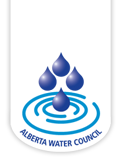What is source water protection?
Source water is untreated, raw water from surface or groundwater sources used for drinking water or other uses.
Source Water Protection (SWP) is one part of a multi-barrier approach to maintain or improve conditions (quality and quantity) of water. It is a process of compiling information on your source water area, identifying risks and assessing risks to the source water, and determining how to manage these risks.
To safeguard human health, drinking water must be kept clean, safe, and reliable. Consequently, the source, the drinking water treatment plant, the distribution system, and upstream and downstream users must be understood and managed in a holistic manner. Securing access to enough water from high-quality sources and protecting those sources is a priority for all water suppliers and communities.
The main objective of SWP is to maintain and improve the condition of source water (quantity and quality).
Other benefits include:
- Improving public health: reduced illnesses, mortalities, health care costs, and productivity losses.
- Reducing uncertainties presented by the growing number of unregulated or unknown emerging contaminants that might not be removed by water treatment systems.
- Reducing costs (e.g., water treatment costs, contamination remediation, monitoring).
- Increasing the likelihood of complying with drinking water regulations.
- Improving source water quality for other benefits.
- Meeting public expectations and maintaining customer confidence.
- Improving the health of the watershed or aquifer for current and future generations.
- Improving communication and collaboration among stakeholders and neighbours.
- Maintaining the cultural importance of water to Albertans, including Indigenous Peoples.

Source water protection programs vary widely in their details but share six fundamental elements, outlined in the image above.
These steps are described in detail in the AWC’s Guide to Source Water Protection Planning and this video. The guide intended for drinking water providers (i.e., public, private, and individual) and should be used together with the AWC’s Protecting Sources of Drinking Water in Alberta: Companion Document. Additional groups that may find the guide useful include municipalities, drinking water providers (utilities), Indigenous communities, Watershed Planning and Advisory Councils (WPACs), Watershed Stewardship Groups (WSGs), and other interested groups.
Additional guidance and information can be found in the SWP Operational Guide to the American Water Works Association’s Standard G300 and the Government of Alberta’s webpage for source water protection.
A drinking water safety plan, similar to a source water protection plan, is a method of assessing risks to drinking water. There is some overlap between the two types of plans; some of the similarities and differences are outlined in the table below:

Some additional considerations include:
- SWP plans can be used to reduce drinking water risks identified in DWSPs.
- DWSPs can be directly integrated into SWP plans depending on the delineation of the source water area.
- SWP plans can build on drinking water risks and their assessment, as included in DWSPs.
- SWP plans can provide data and identify expertise for drinking water operators to apply in their operations.
- WPACs and drinking water operators can help guide the development, implementation, and evaluation of SWP plans and DWSPs through engagement activities, networking, and facilitating multi-stakeholder input, thereby applying a watershed “lens” to this work.
- Connections with municipal development plans and creating and enforcing bylaws can help with risk management actions related to SWP plans and DWSPs.
- Delineating source water areas has been done by the GoA to some extent, and some of this information can be made available through WPACs and municipalities.
The Government of Alberta provides additional resources and guidance to assist operators in the preparation of drinking water safety plans.
The Healthy River Ecosystem AssessmenT System (THREATS™) is a comprehensive web-based platform that empowers drinking water providers to develop and update source water protection plans efficiently and effectively.
THREATS™ integrates extensive environmental data with powerful analytical tools to help:
- Delineate watersheds with precision using interactive mapping tools.
- Characterize landscape activities including land use, municipal boundaries, and protected areas.
- Assess water quality and quantity through robust statistical analysis and trend identification.
- Visualize complex data through user-friendly interactive maps, charts, and dashboards.
- Access real-time and historical data from multiple sources including Water Survey of Canada, provincial databases, and Environment Canada.
- Identify potential contamination risks to drinking water sources.
THREATS™ serves as a powerful decision-support tool for source water protection planning, helping municipalities and water utilities safeguard drinking water sources through data-driven risk assessment and management strategies.
For more information, visit this page.
THREATS can be accessed here.
The following links are additional resources from AWC and others to help undertake source water protection.
General resources:
- AWC Protecting Sources of Drinking Water in Alberta project - guide and companion document to help drinking water providers and others protect source water
- AWC Source Water Protection Phase I: Risk Assessment Tools and Data project - developed a web tool to support the risk assessment step of SWP
- US EPA - resources for source water protection plannning
- Government of Alberta - resources on drinking water protection
Collaboration/ outreach:
Example SWP plans from Alberta:
- City of Calgary
- City of Edmonton (EPCOR)
- City of Camrose and Camrose County
- Grimshaw Gravels Aquifer
- Wabasca Area
- Town of Grande Cache
For more information, contact us.
